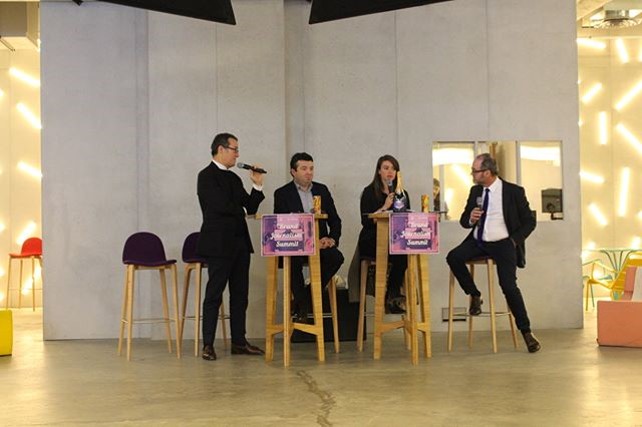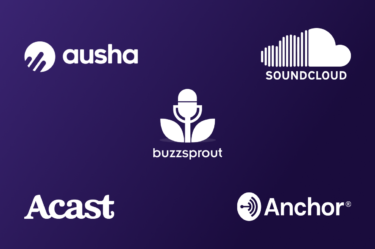Today, Friday, December 1, Relaxnews inaugurated the first “Brand Journalism Summit” conference. Relaxnews had the pleasure of sharing expertise from a wide variety of experts from brands (Paris Aéroports, Compte Nickel, Villa Numeris), agencies (Publicis Groupe), start-ups (Flint, Syllabs), and the media (AFP, Les Echos, and the former president of The Financial Times).
Speakers took a deep dive into the world of “brand journalism.” They covered everything from the definition of “brand journalism” to best practices to leveraging insights gathered from data to the evolution of the advertising industry.
Here are the key takeaways:
1. Today’s Chief Marketing Officer is an Editor-in-Chief
Running a brand has become more and more like running a media. Today’s CMO must be able to function like an editor-in-chief in order to meet marketing needs. Content has become central to brand strategy, and CMOs must understand how to make that content relevant and valuable to audiences. “Brand journalism” is one of the best ways to engage audiences with content that treats topics and events that they care about to draw them closer to their brand’s message. In order to play the role of a media, the brand should fade into the background and stop talking about itself.
2. “Brand Journalism” Must Build Credibility and Add Value
Adding value begins with data. Social listening and search data allow brands to understand what audiences are passionate about, when, how, and at what time to engage with them engage using “brand journalism.” As for building credibility, it has become vital for brand “editors-in-chief” to consider ethics in the creation of content and the distribution of information, which is to say that they must produce content based on valid and factual information. As the authors of brand stories, they must communicate on topics that matter and that resonate with audiences, but go about it in a way that builds credibility and adds value.
3. 2018 Will Be a Year of Continued Evolution
2017 has been a year full of new trends that raise new questions – like what does it take to be a digital editor-in-chief, how can brands personalize content, and what tools do they need to invest in? As we transition into 2018, these questions remain important. As we look forward to content strategy for 2018, Pierre and Jérôme Doncieux shared 8 pieces of advice to help guide strategy – among them: imagine you’re “Joseph Pulitzer,” define your editorial line, and mix breaking news with soft news topics. Their advice on how to integrate these elements of “brand journalism” into communication strategy is simple, “brands should “platformize” their approach, “industrialize” production, and organize and rationalize their investments (in the right tools and people) so that they can maximize impacts.” There is no longer such a thing as one-size fits all, and brands will need to adapt their methods and tool kits to evolving audience needs.
4. Leverage Machine Learning to Improve “Brand Journalism” Efforts
Beyond 2018, speakers discussed the future of content and the role of technology. Claude de Loupy of Syllab said of artificial intelligence, “the thing is, there is the term AI that we use to describe machine learning and there is the AI that we use to describe machines as intelligent beings. No matter what you have read, no one has created a machine yet that is intelligent enough to replace human beings in the production of content, no one.” However, machines can help refine and industrialize the production of editorial content by sourcing data on what topics are most interesting to audiences, curating content so that it is relevant to a specific audience, and diffusing that information faster than ever. From personalized newsletters to “edibots-in-chief” to help with your “brand journalism” efforts, now is the time to discover technology that will help brands better meet objectives by contributing to “brand journalism” efforts.
5. The End of Advertising?
The conference closed with a panel who responded to the provocative question “Is advertising on its way out?” Valérie Henaff, CEO of Publicis Worldwide, Francis Morel, CEO of French newspaper Les Echos, and Hugues Le Bret, Co-Founder of the innovative bank recently acquired by BNP Paribas, Compte Nickel) debated on the topic.
The verdict: The question is not whether or not advertising is dead, but rather where it is going. Today, the possibilities for communicating a brand message have expanded and the lines between brand content and advertising are often blurry. Valérie Henaff and her team, advertisers at their core, constructed a “loft” made up of data scientists, strategists, creatives, and sales-people in order to create content linked to events and trending topics (“brand journalism”) to share on their clients’ brand platforms and meet advertising objectives. Meanwhile, Hugues Le Bret launched and created buzz around Compte Nickel in a mere 15 days without any advertising. He was successful, as Francis Morel pointed out, thanks to a disruptive and useful service that leveraged media coverage. The takeaway being that a good-quality product paired with appropriate content shared on a relevant platform is what makes the difference. Money spent on ad campaigns that do not consider these factors is money wasted.
In conclusion, “brand journalism” with all its complexities is key element to a strong communication strategy. If this first summit conference is proof of anything, it is Publicis Groupe’s faith in the power of content and its aspiration to reinforce its strength in the domain both in France and internationally.






